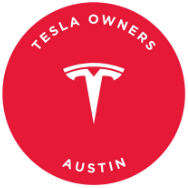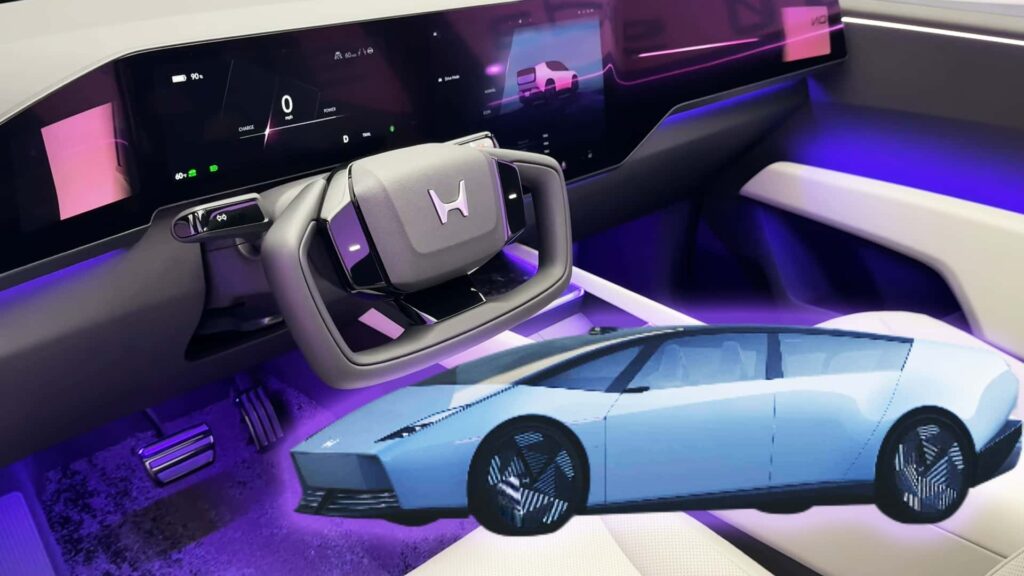Even though there’s a ton of data showing that people want to buy electric vehicles from Japanese auto brands, that country’s car industry is pretty far behind the curve on competitive all-electric options. But of all the Japanese automakers, Honda is probably working to catch up the most quickly.
Honda is spending big on battery and software R&D, it’s opening a new manufacturing “hub” in Ohio this year, and it will roll out a radically new family of electric models in 2026. These cars are called the 0 Series EVs, and they have that name for a reason: they’re a bold reset for a company most famous for its high-quality internal combustion engines.
In other words, these cars aren’t your father’s Hondas. A video tour from our friends at TFLEV of the two prototypes shown at CES reveals why.
In these videos, host Nathan checks out the 0 Series Saloon and 0 Series SUV “Prototypes” with Honda’s Jonathon Rivers to see what they could offer customers when they start to go on sale (hopefully) next year. With screens spanning the entire dashboard, a yoke-like steering wheel and looks that have been compared to Lamborghini’s cars, both feel like they’re 20 or 30 years ahead of your garden-variety Accord or CR-V.
It’d be easy to write these off as just distant, dreamy concept cars. But this is Honda we’re talking about; it doesn’t really do concept cars like other automakers do, preferring instead to show off things that are close to their final designs. “In Honda-speak, [a Prototype] is usually pretty close to mass production,” Rivers says in the video. The 0 Series Saloon is a long vehicle—almost Odyssey minivan-sized—a kind of executive limo built to maximize interior space. It’ll have advanced hands-off, eyes-off automated driving assistance tech, but Rivers confirms that this technology will be launched in phases over time with over-the-air software updates.
“We want to be the world’s first automaker to bring Level 3 autonomous driving to all road types and conditions,” Rivers says, referring to a system where a car can drive itself nearly all of the time as long as a human driver is ready to take control of the vehicle at all times. That’s a big quantum leap over what’s on the road now; so far, only certain Mercedes-Benz cars offer true Level 3 driving, albeit in very limited uses.
But I would argue that the inside of the 0 Series is where things get the most out there. The yoke steering wheel is upside-down to allow easier entry, but then it turns the right way for actual driving. The hi-res displays evoke the Lucid Air or China’s EVs and buttons are few and far between. Though it’s a lot of screens, “We wanted everything to be clear and easy to use,” Rivers says.
And yes, they will still have Apple CarPlay and Android Auto, he adds.
I’m a little sad to see that like Tesla and Rivian’s EVs, you must adjust your air conditioning and venting directions via the touchscreen. I personally haven’t tested any EVs where that’s a better user experience than old-school vents and buttons, but hey, I’m not an automotive engineer, so what do I know?
Like the Sony-Honda Afeela EVs—which will also be built at Honda’s Ohio EV hub and are expected to be related in many ways—the 0 Series models do feel designed to compete with China’s software-driven electric models. That’s why the 0 Series also has a passenger-facing screen, something popular in China that often perplexes Western audiences a bit. There are other flourishes here that are pervasive in China as well, like a kind of “ambiance mode” to chill the vibes during a long road trip.
Still, Rivers insists that the high-quality animations and touchscreen-based controls are what Honda wants to bring to production. The screen operates the driving modes, navigation, entertainment and nearly all other functions.
Rivers adds that Honda is targeting “at least 300 miles of range for all of the 0 Series models—we look at that as the new benchmark.” More specs should be revealed closer to launch, he says. With any luck, cars like the low-slung 0 Series Saloon will do even better; 300 miles of range is indeed an ideal target, but it could be outclassed by other competitors in 2026.
The 0 Series Saloon is definitely the tip of the spear high-tech flagship of the new line. But the 0 Series SUV is probably going to be the moneymaker of the family. It’s due to be the first one built in Ohio and this prototype too is “very close” to its production design.
The almost “kammback” rear end may not be everyone’s jam, but it helps with aerodynamics and range—and the opening itself seems quite cavernous.
Honda has been making waves in the electric vehicle market with their futuristic 0 Series cars. The latest addition to the lineup is the 0 Series SUV, which boasts a sleek and spacious design that can accommodate plenty of gear. The interior features a yoke steering wheel with steer-by-wire technology, an all-screen dashboard, and the innovative Asimo OS software system.
One standout feature of the prototypes is the use of cameras instead of traditional side mirrors. While other countries have embraced this technology, it remains to be seen if it will meet American safety regulations for production models. The SUV is powered by AI for various features and offers over-the-air software updates for added convenience.
According to Rivers, the 0 Series family will serve as a sub-brand for Honda, targeting a more premium market segment to attract new customers. This strategy is reminiscent of the successful Honda Prologue, which has gained popularity for its GM-based electric platform that appeals to traditional Honda drivers looking to make the switch to electric vehicles.
The 0 Series cars are undeniably futuristic and may not appeal to everyone with a projected starting price of around $50,000 when they hit the market in 2026. However, their cutting-edge design and advanced technology set them apart from other electric vehicles on the market, offering a glimpse into the future of automotive innovation. It will be interesting to see how consumers respond to Honda’s bold vision for the 0 Series lineup in the coming years. The sun was setting over the horizon, casting a warm glow over the quiet town. As the day came to a close, the townspeople gathered in the town square, eager to hear the news of the day.
The mayor stood at the front of the crowd, a look of concern on his face. He cleared his throat and began to speak, his voice carrying through the square.
“My fellow townspeople, I come to you with grave news,” the mayor began. “It seems that a group of bandits has been terrorizing our town, stealing from our stores and causing chaos.”
Gasps and murmurs spread through the crowd as the townspeople listened intently to the mayor’s words. The bandits had been a nuisance for some time now, but their recent actions had escalated to a point where the town could no longer ignore the threat.
“We cannot let these bandits continue to wreak havoc on our town,” the mayor continued. “We must band together and put an end to their reign of terror once and for all.”
The townspeople nodded in agreement, determined to take action against the bandits. Plans were quickly made to form a group of volunteers to patrol the town and keep a lookout for any suspicious activity.
As night fell, the group of volunteers set out into the town, their eyes sharp and their hearts brave. They knew that the bandits could strike at any moment, but they were prepared to defend their town with everything they had.
Hours passed, and the town remained quiet. The volunteers patrolled the streets, their presence a deterrent to any would-be thieves. And then, just as the first light of dawn began to peek over the horizon, they spotted them – the bandits, sneaking through the alleyways with stolen goods in tow.
Without hesitation, the volunteers sprang into action, confronting the bandits and driving them out of town. The townspeople cheered as the bandits fled, their reign of terror finally brought to an end.
As the sun rose over the town, the mayor addressed the crowd once more, a smile on his face. “Today, we have shown that when we stand together, we can overcome any challenge,” he said. “Our town is safe once more, thanks to the bravery and determination of our volunteers.”
And with that, the townspeople celebrated their victory, grateful for the unity and strength that had allowed them to protect their home from harm. The bandits may have been a threat, but the town had proven that they were no match for the power of a united community.

